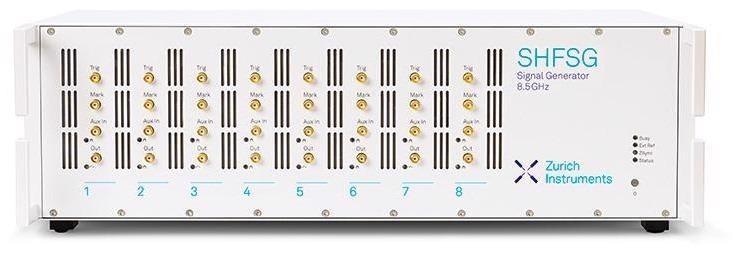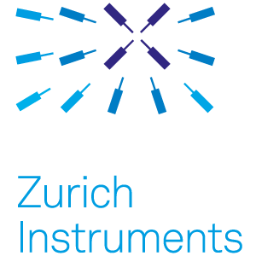The continuous advancement of quantum computing has led to an ever-increasing need for supporting technologies.

Figure 1. Image Credit: Zurich Instruments
Ever since IBM announced a 65-qubit machine1 together with the software development kits and cloud access to quantum machines, the attractive potentials of various applications of quantum computing appear much more achievable than ever.2
But leveraging the power of a quantum computer implies the ability to control the qubits with the help of a signal generator. The signal generator helps program pulse sequences to serve as a control device that can modify a qubit’s state as required, which forms the basis for logical operations.
To this end, Zurich Instruments has designed the SHFSG Signal Generator—the first-ever solution for qubit control available on the market.
SHFSG Signal Generator
The SHFSG Signal Generator from Zurich Instruments can be used to produce freely programmable pulse sequences, designed particularly to manipulate spin and superconducting qubits.3
Qubits of this type are currently used in a few of the most widely used quantum computer designs. It is believed that long coherence times provided by superconducting qubits offer one of the most potential architectures for larger systems.
A single SHFSG can be used to manipulate a small qubit set-up, and a few synchronized systems can control systems featuring more than 100 qubits.
Thanks to its open-source LabOne software, which features driver compatibility with QCoDeS and Labber, the SHFSG Signal Generator streamlines the control and interfacing process. The SHFSG additionally features API support for MATLAB®, Python, .NET, C/C++ and LabVIEW™.
The SHFSG comes with options for 4 or 8 analog outputs for qubit control. The device forms an integral part of the Zurich Instruments full Quantum Computing Control System.4 The QCCS is a customizable system with the flexibility to be tailored for any application.
The QCCS has been designed to reduce the effort related to developing system calibration and control processes. All these features simplify the process for working on research applications related to quantum computing.
Signal Clarity
The SHFSG Signal Generator is vital for quantum computing applications and has been designed specifically for high-fidelity signal production. It produces microwave signals with an error-free output bandwidth of 1 GHz in the case of short pulse generation. It features a variable carrier frequency of up to 8.5 GHz.
Producing such signals would often be a multi-step process that includes microwave signal generators, arbitrary waveform generators and mixer circuits.
Since the SHFSG integrates all of these in a single box and uses a superheterodyne frequency conversion method, the need for calibration routines, which could be another source of error, is avoided.
The superheterodyne method employed in the SHFSG also offers benefits for signal quality. It enables improved linearity and reduced spurious tones than standard IQ-based mixer techniques while realizing high output powers.
The signal stability of the output is extremely high with low timing jitter and low phase noise over the entire frequency range.
Within the framework of the QCCS, the SHSFG can be combined with fast feedback and error correction protocols. This involves feedback techniques like quantum error correction and active reset, which can be connected through the ZSync interface.
In the case of quantum computing, where the qubits are essentially unstable and fragile, specifically with increasing architecture sizes, reducing errors and error correction is crucial for the successful completion of algorithms.

Figure 2. Image Credit: Zurich Instruments
Quicker Computation
Although computation times can be reduced by improving error correction, as a single box system, the SHSFG Signal Generator also saves time in many other ways. One such way is the minimization of system maintenance times and avoiding the need for calibrating many different signal generation sources.
The SHSFG minimizes the memory space used for complex signal generation, thereby decreasing the total communication time within the instrument and thus enhancing measurement times.
When it comes to larger quantum computers, the communication time forms essentially a gridlock in the tune-up time. Thus, the SHSFG is an efficient and completely scalable solution for quantum computing control of architectures of any size.
The PQSC exhibits the potential to synchronize several SHFSGs and features a communication latency of <100 ns.5 Users can use clock speeds of 10 or 100 MHz with internal or external triggering. Each channel includes a dedicated trigger input that can be linked through an SMA connection.
Zurich Instruments has developed this pulse sequence generator in association with a few of the pioneering groups from Europe to guarantee that all features of the device design are customized to real research applications.
Users can now simplify and streamline measurement control for laboratory configuration using the first market-ready quantum computing control system and discover what new potentials reliable production of complex pulse sequences could do for their research.
References
- Cho, A. (2020) IBM promises a 100 qubit quantum computer, https://www.sciencemag.org/news/2020/09/ibm-promises-1000-qubit-quantum-computer-milestone-2023#:~:text=IBM's%20current%20largest%20quantum%20computer,run%20on%20different%20quantum%20computers., accessed 2nd April 2021
- IBM (2021) Quantum Computing, https://www.ibm.com/quantum-computing/, accessed 2nd April 2021
- Zurich Instruments (2021) SHSFG, https://www.zhinst.com/europe/en, accessed 2nd April 2021
- Zurich Instruments (2021) QCCS
- Zurich Instruments (2021) Programmable Quantum Systems Controller, https://www.zhinst.com/europe/en/products/pqsc-programmable-quantum-system-controller
Read more from Zurich Instruments

This information has been sourced, reviewed and adapted from materials provided by Zurich Instruments.
For more information on this source, please visit Zurich Instruments.